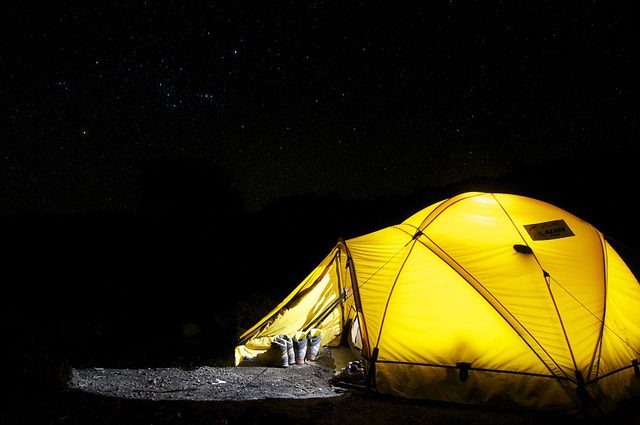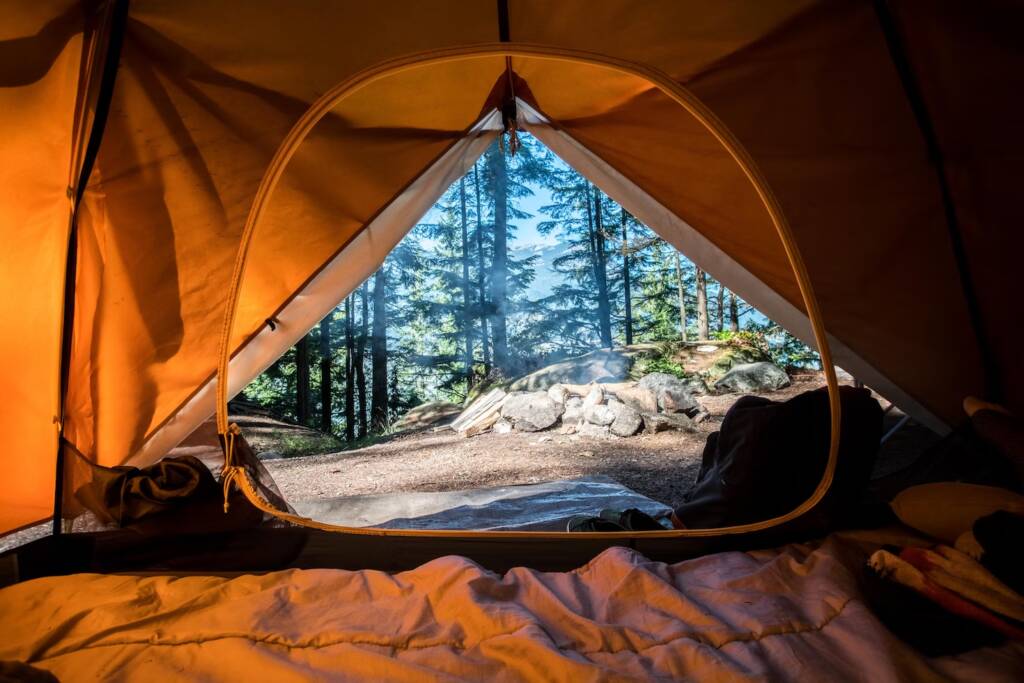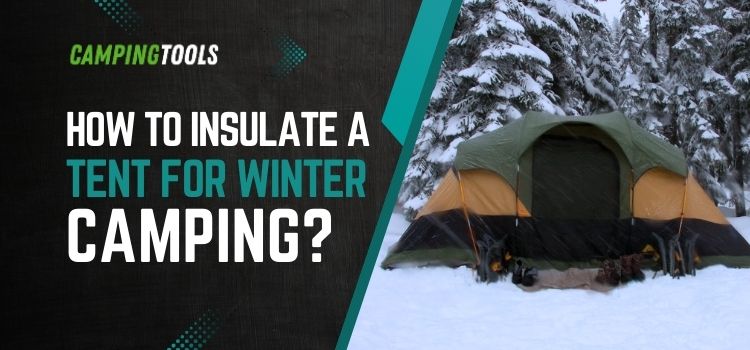Are you planning a winter camping trip and wondering how to stay warm in your tent? One crucial factor that can make or break your cold-weather camping experience is proper insulation.
In this article, we will discuss how to insulate a tent for winter camping, so you can enjoy a cozy and comfortable camping adventure even in the coldest of temperatures.
Why Insulate Your Tent for Winter Camping?

Before we dive into the specifics, it’s essential to understand why tent insulation is crucial for winter camping. The primary purpose of insulation is to retain heat inside your tent and prevent cold air from entering.
Without proper insulation, your body heat will quickly escape through the walls and floor of your tent, leaving you shivering all night long.
Moreover, insulation also helps to block drafts and moisture from seeping into your tent, keeping you dry and warm. It can also provide sound insulation, making for a quieter and more peaceful camping experience.
Basic Tips for Insulating Your Tent
Before we get into the different insulation materials and methods, here are a few general tips to keep in mind:
- Set up your tent on a flat and elevated surface to prevent moisture from seeping in.
- Use a groundsheet or tarp under your tent for an extra layer of insulation.
- Invest in a high-quality sleeping bag rated for cold temperatures.
- Layer your clothing and use a sleeping bag liner for added warmth.
- Avoid breathing inside your tent, as it can create excess condensation and make the interior damp.
How to Insulate a Tent for Winter Camping?
When it comes to tent insulation, there are several methods and materials you can use depending on your budget, camping location, and personal preferences. Let’s explore the different options available.
1. Choose the Right Type of Tent and Insulation
The first step to insulating your tent is choosing the right type of tent and insulation material. For winter camping, it’s best to opt for a four-season or cold-weather tent that is specifically designed for harsh weather conditions.
When it comes to insulation materials, there are various options available in the market, such as synthetic or down sleeping bags, insulated sleeping pads, and thermal blankets. However, one material that stands out for its effectiveness in tent insulation is wool.
If you are camping in the summer season then you should choose a tent with an AC port. So depending on the weather conditions the gears will be chosen.
2. Select the Proper Materials for Tent Insulation
Wool has been used for centuries as a natural insulation material, and it continues to be a popular choice among outdoor enthusiasts. Unlike synthetic materials, wool is breathable, moisture-wicking, and quick-drying, making it ideal for winter camping.
So how can you use wool to insulate your tent? One option is to line the interior walls of your tent with wool blankets or rugs. You can also use wool sleeping bags or add a layer of wool insulation to your existing sleeping bag for extra warmth.
3. Set Up the Ground Sheet to Provide an Extra Layer of Protection
Another essential aspect of tent insulation is setting up a groundsheet. This serves as a barrier between you and the cold ground, preventing heat loss from your body.
You can use a wool or insulated foam groundsheet for better insulation. Alternatively, you can also use natural materials like pine needles or leaves to create an extra layer of protection.
4. Employ Alternative Ways to Keep Heat Inside the Tent

Apart from using wool, there are other alternative heating options for tents that can help you stay warm during winter camping.
One such option is a hot water bottle or heat pack. Fill them up with boiling water and place them inside your sleeping bag to keep you warm throughout the night.
Another way to insulate your tent is by using battery-operated heated blankets or foot warmers. These can be placed under your sleeping bag to provide extra warmth and comfort.
6. Make Use of Reflective Blankets or Foil Wraps for More Heat Retention
Reflective blankets or foil wraps are another innovative way to keep yourself warm inside your tent during winter camping. They work by reflecting body heat back towards you, providing an extra layer of insulation.
You can either purchase pre-made reflective blankets or make one yourself using some aluminum foil and tape. Simply cover the interior walls of your tent with foil, ensuring there are no gaps for heat to escape.
7. Learn About Different Ways of Attaching Tents
When camping in the winter, it’s important to have a sturdy and well-secured tent. However, traditional methods of securing tents may not work as effectively in snowy or frozen ground. One solution is to use snow anchors or snow stakes to secure your tent.
Additionally, you can attach reflectors like Mylar blankets or space blankets to nearby trees and shrubs using paracord or other strong cords.
This will not only provide extra insulation but also create a windbreak for your tent, keeping you even warmer.
8. Choosing the Best-insulated Sleeping Bags (Best Materials for Tent Insulation)
A suitable sleeping bag is essential for winter camping, as it can make or break your experience. When choosing a sleeping bag, look for one that has a temperature rating of at least 10-20 degrees below the expected nighttime temperatures.
Additionally, opt for one with extra insulation in key areas such as the feet and head.
Wool-insulated sleeping bags are becoming increasingly popular, as wool is a natural and sustainable option for insulation.
Look for sleeping bags with a wool lining or use a wool liner inside your existing sleeping bag to add extra warmth.
9. Making Use of Hot Water Bottles (Natural Insulation Materials for Tents)
Hot water bottles can be a lifesaver when camping in the winter. Simply fill them with hot water before bedtime and place them on your feet or inside your sleeping bag to keep you warm throughout the night.
You can also wrap a hot water bottle in a towel and use it as a makeshift heater by placing it near you while you relax in the tent.
Steps to Keep in Mind While Start Camping in Winter

Steps to Keep in Mind While Start Camping in Winter
- Inspect Your Tent and Gear Beforehand
Before heading out for your winter camping trip, make sure to inspect all your gear and equipment beforehand. Check for any tears or holes in the tent fabric and repair them if needed. Make sure zippers are functioning properly, and poles are sturdy. - Choose a Proper campsite
When setting up camp, look for an area that is sheltered from strong winds and has plenty of natural insulation. Setting up camp near trees or a natural barrier can provide extra protection against wind and snow. - Create a Layer
Between You and the GroundA layer between you and the ground is crucial for staying warm while winter camping. Lay down a tarp or plastic sheet followed by blankets, sleeping pads, and then your sleeping bag.
This will prevent cold air from seeping up into your sleeping area. - Utilize Natural Insulation
MaterialsAs mentioned earlier, using natural materials for insulation is a great way to stay warm while camping in the winter. Pine needles, leaves, and even snow can be used as extra insulation under your tent or around it. - Invest in Wool Insulation (Wool for Tents)
Another great option for winter camping insulation is wool. Wool is a natural insulator that does an excellent job of keeping heat trapped inside your tent. You can purchase wool blankets or even use wool clothing to add extra layers of warmth. - Use Alternative Heating Options
If you have access to a wood-burning stove or portable heater, these can also be great options for keeping your tent warm. Just make sure to follow all safety precautions and never leave them unattended. - Consider a Tent Specifically Designed for Winter Camping
If you are an avid winter camper, investing in a tent specifically designed for cold weather is a wise choice. These tents often come with added insulation and features such as reinforced poles to withstand harsh winter conditions. - Don’t Forget About Ventilation
While insulation is essential for staying warm, proper ventilation is also crucial. Make sure your tent has adequate ventilation to prevent condensation buildup, which can make things damp and uncomfortable. - Layer Up (Winter Camping Tent Insulation)
Just like you would when dressing for a winter day, layering up while sleeping in a tent is key. This not only adds extra warmth but also allows you to adjust your layers as needed throughout the night. - Stay Dry
Lastly, staying dry is crucial when camping in the winter. Make sure to keep all of your gear and clothing as dry as possible to prevent heat loss and discomfort.
Conclusion (Winter Camping Tent Insulation)
Winter camping can be a rewarding and enjoyable experience, but it’s essential to properly insulate your tent to stay warm and comfortable. By following these tips on “How to Insulate a Tent for Winter Camping?” and using the right materials, you can have a cozy and inviting tent for your next winter camping trip.
Remember to pack plenty of wool blankets, consider alternative heating options, invest in a winter-specific tent, maintain proper ventilation, and always prioritize staying dry.
With these tips in mind, you’ll be well on your way to a successful and comfortable winter camping experience.
Happy camping!
FAQs (How to Insulate a Tent for Winter Camping?)
What is the best insulation for a tent?
The best insulation for a tent depends on personal preference and budget. Some popular options include wool, synthetic materials, and down feathers.
Can you insulate a camping tent?
Yes, it is possible to insulate a camping tent using various methods such as adding an extra layer of fabric or using natural insulation materials like wool or blankets.
How do I keep my tent warm in the winter?
To keep your tent warm during winter camping, you can insulate it with extra layers of fabric or use natural insulation materials like wool. You can also make use of hot water bottles and alternative heating options such as portable heaters.
How do you winterize a camping tent?
Winterizing a camping tent involves insulating it, sealing any drafts or openings, and using alternative heating options to keep the interior warm. It is also important to choose a suitable campsite with shelter from wind and precipitation.
Can you insulate a tent with blankets?
Yes, you can use blankets as insulation for your tent. Simply layer them on the floor and walls of the tent to provide added warmth.
How do you insulate a cheap tent?
There are several inexpensive ways to insulate a cheap tent, such as using blankets or sleeping bags as extra layers, placing foam mats under your sleeping bag for insulation from the ground, and sealing any openings or drafts with duct tape.






